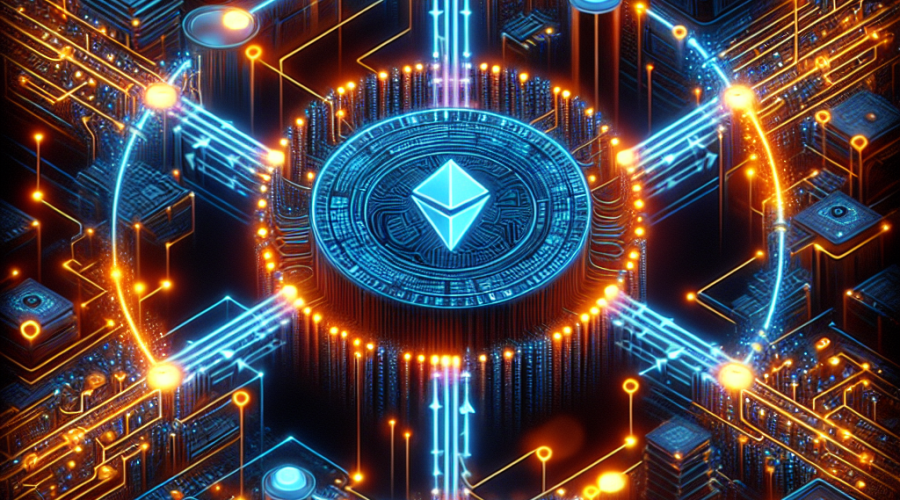Nvidia’s Market Value Plummets: The End of the AI Hype Cycle?
Nvidia, once the undisputed darling of the artificial intelligence (AI) revolution, is experiencing a dramatic correction as its market value takes a sharp downward spiral. The company’s stock dropped by 5% on a single day, resulting in an astonishing $800 billion loss in market capitalization since the beginning of the week. This sudden reversal is more than a simple market fluctuation; it’s a warning shot for investors about the limitations of hype-driven growth, rising competitive pressures, and the myriad challenges facing the global technology sector.
The AI Boom and Nvidia’s Meteoric Rise
Over the past few years, Nvidia has ridden the wave of AI enthusiasm to become one of the world’s most valuable technology companies. Its innovative graphics processing units (GPUs) and specialized AI chips became the backbone of data centers, powering a wide array of machine learning and deep learning applications. As businesses and governments raced to harness AI capabilities, demand for Nvidia’s chips soared, propelling its stock to record highs and boosting its market capitalization well above the trillion-dollar threshold.
Investors flocked to Nvidia, betting that its dominant position in AI hardware would secure outsized profits for years to come. The tech sector as a whole benefited from this euphoria, with venture capitalists, institutional investors, and retail traders dumping billions into companies tied to the AI gold rush.
The Sudden Chill: Why Are Investors Pulling Back?
However, the relentless upward climb was always at risk of hitting a ceiling. This week, that ceiling became painfully clear. The 5% drop in Nvidia’s stock price reflects mounting doubts over the sustainability of AI-driven growth. Investors are increasingly wary that the market’s expectations have outpaced realistic earnings potential and that the hype surrounding AI is beginning to dissipate.
Several factors are fueling this pullback:
- Fading AI Euphoria: AI has captured the imagination of investors, but widespread adoption has not translated to immediate, consistent profitability for tech giants. The initial rush to deploy AI systems is giving way to more measured, cost-conscious implementation.
- Valuation Concerns: Nvidia’s market capitalization and price-to-earnings ratios shot to historic highs, raising concerns about overvaluation. As investors reassess, many are cashing in profits or reallocating funds to less speculative sectors.
- Cautious Market Sentiment: Global uncertainty, including economic headwinds and fluctuating inflation rates, has tempered risk appetite among equity investors.
Rising Competition: AMD and Industry Giants Step Up
Perhaps the most significant threat to Nvidia’s dominance is the emergence of formidable competitors. Advanced Micro Devices (AMD), a long-standing rival in the semiconductor industry, has made tremendous strides in catching up to Nvidia’s technology. By securing partnerships with major players such as OpenAI, AMD is directly challenging Nvidia’s grip on the lucrative AI chip market.
The competitive landscape is further complicated by other tech giants choosing to invest heavily in developing their own custom AI chips. Companies like Google, Amazon, and Apple are pouring resources into proprietary AI hardware, aiming to control their supply chains and optimize performance to suit their unique business needs.
“The competition is getting fiercer, and Nvidia is facing stronger challenges,” noted a leading tech industry analyst.
This shift from reliance on Nvidia’s chips towards in-house solutions translates into significant potential loss of revenue and influence for Nvidia. As customers gain more options, Nvidia’s once-unassailable position becomes vulnerable.
Impact of Export Restrictions and Geopolitical Risks
Equally daunting for Nvidia is the specter of regulatory challenges. The current geopolitical climate is marked by rising tensions between major economic powers, especially the United States and China. Growing restrictions on technology exports have started to bite into Nvidia’s global supply chain and revenue prospects.
The U.S. government has enacted stringent controls on the export of advanced AI chips to certain countries, most notably China. These restrictions are designed to limit technological proliferation but have unintended consequences for American tech companies. Nvidia, which generates a significant portion of its revenue from overseas sales, is particularly vulnerable to abrupt shifts in trade policy and international relations.
Any expansion of export controls could cut off vital markets for Nvidia’s chips, stifle growth, and erode its competitive edge. Investors remain wary of ongoing political brinkmanship and the potential for sudden regulatory surprises.
Tech Sector Headwinds: Beyond Nvidia
Nvidia’s troubles do not exist in a vacuum. The broader tech industry is wrestling with a series of headwinds, including:
- Supply Chain Bottlenecks: Ongoing disruptions to global manufacturing and logistics hinder the production and distribution of critical hardware components.
- Shifting Consumer Demand: Rapid advancements in hardware and AI create volatility, as businesses and consumers hesitate to buy new technology that could soon become obsolete.
- Labor and Skills Shortages: The talent war for skilled engineers and AI specialists is tightening, raising operational costs for even the largest firms.
All these factors compound the risks facing Nvidia, incentivizing a more cautious stance among investors throughout the technology landscape.
What’s Next for Nvidia and the AI Sector?
The recent plunge in Nvidia’s stock price is a wakeup call for companies and investors who believed the AI boom would deliver uninterrupted, exponential growth. It signals the start of a new, more mature phase for the AI market, defined by rational expectations, tighter competition, and operational discipline.
For Nvidia, the path forward depends on several key strategies:
- Product Innovation: Continued leadership requires breakthrough hardware capable of outperforming rivals on speed, efficiency, and scalability.
- Strategic Partnerships: Collaborating with software makers, cloud providers, and enterprise clients can help lock in long-term demand and defend market share.
- Global Diversification: Reducing reliance on any single market or region will mitigate risk from geopolitical shocks or protectionist policies.
- Agile Management: Navigating regulatory and supply chain challenges will necessitate nimble, forward-looking leadership.
The company has proven resilient in the past, bouncing back from downturns with fresh innovations and a robust business model. But the stakes are now higher than ever, and complacency is not an option.
Investor Caution and Market Realignment
The market is recalibrating. While AI is likely to remain a driver of technological progress, the expectation of boundless and immediate returns is giving way to more grounded, long-term perspectives. Shareholders are increasingly focused on tangible earnings growth, realistic forecasts, and strategic flexibility rather than hype and speculation.
For those who believed Nvidia could defy gravity indefinitely, recent events offer an important lesson in the cyclical nature of technological innovation and investment psychology. The days of easy wins in AI hardware may be over, but for well-prepared companies and prudent investors, the next phase promises both challenges and new opportunities.
Conclusion: A New Chapter for Nvidia and AI
Nvidia’s remarkable $800 billion value loss in a single week will be remembered as a pivotal moment in the maturation of the AI industry. As excitement cools and competitive and regulatory risks mount, the company faces its greatest test yet. Whether it emerges stronger or ceded ground to the rising tide of competitors remains to be seen—but one thing is clear: the era of unchecked AI euphoria has ended, replaced by an era of careful, measured progress.
Investors, companies, and policymakers alike will need to adapt to this new reality. For Nvidia, the path forward will require innovation, resilience, and strategic agility in the face of a rapidly changing landscape. The story of Nvidia’s ascent—and its current challenges—serves as a microcosm for the broader tech industry’s journey into the next phase of the digital age.


















